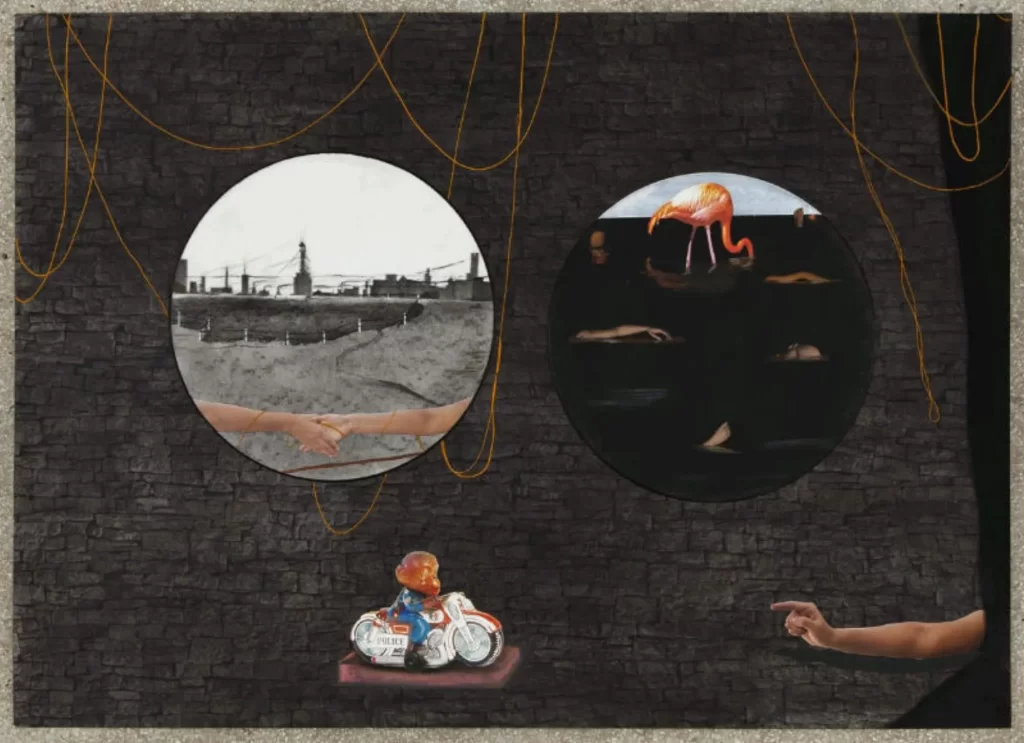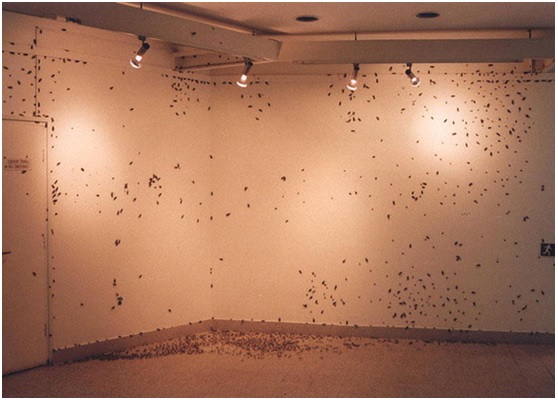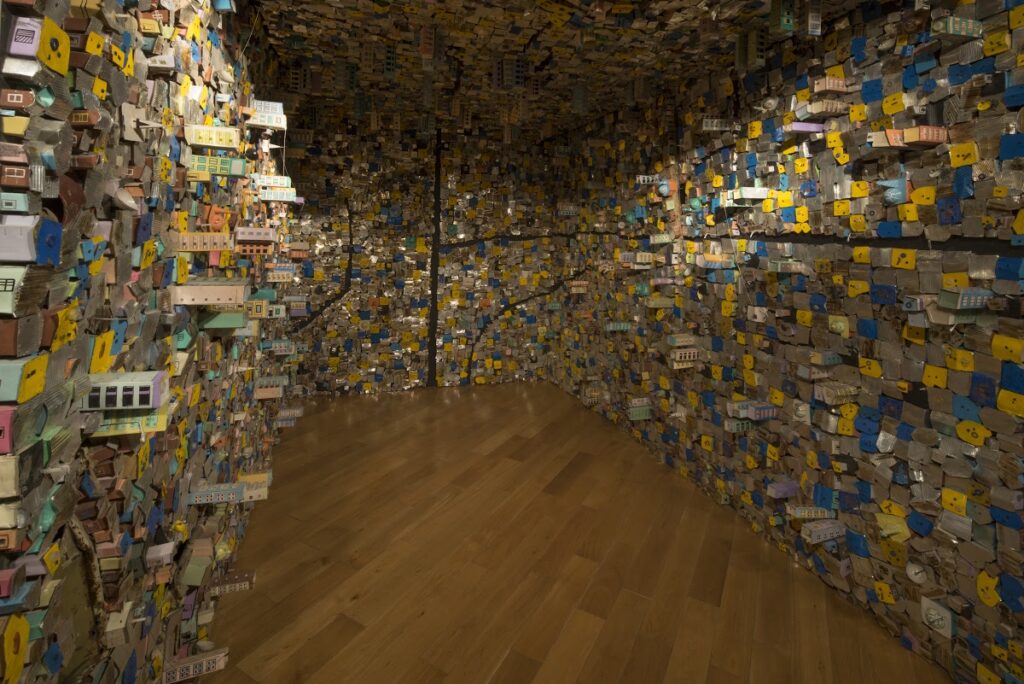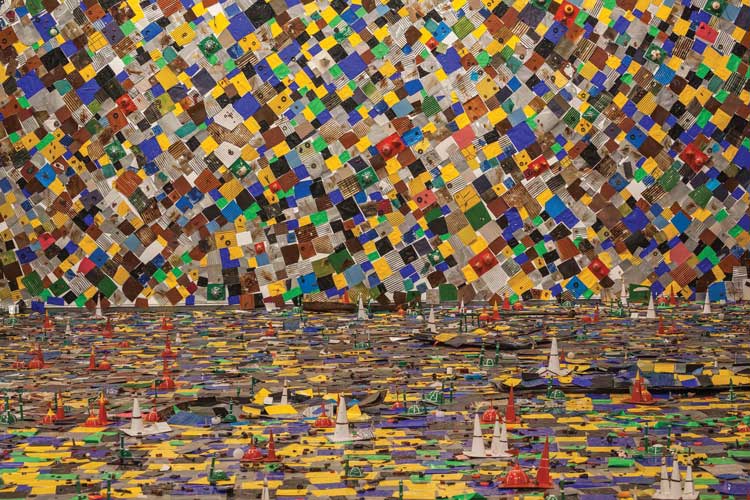When the art world lost artist Hema Upadhyay, it was staggered. Both her and the expanse of her immense talent were grieved for a long time, and are still being grieved. Despite the gruesome intensity of Hema Upadhyay death, she is remembered for her poignant artworks and optimism. Hema Upadhyay was born in Baroda in 1972. She earned her BFA and MFA from the University of Baroda and soon came to become one of the most recognised artists in the Indian Contemporary Art scene. She had a fresh and unique voice.
Hema Upadhyay Artist Style
If one manages to sift through her numerous works, it becomes clear that migrants are often the locus of her pieces. They can be found climbing and walking in the huge expanse of the urban spaces. It appears as if they are trying to make sense of this new geography and all that it entails. Hema Upadhyay paintings were a commentary upon the ills that plague our urban spaces and those who inhabit them. Themes of uneven development and a crisis of belonging and adaptation are often dealt with.

Hema Upadhyay Artwork
Hema Upadhyay artworks are laden with uncomfortable questions. A work often referred to as one of her finest is titled ‘Dream a Wish, Wish a Dream’ (2006-07). It provokes the viewer to think by asking questions about the definitions of utopia and dystopia and how they might seep into each other, about what it means to accommodate worlds that threaten to cancel each other out. Some of her works are self-images of a woman going about doing mundane tasks claiming both the public and private spaces.

Hema Upadhyay biography is riddled with numerous prestigious exhibitions and accolades. ‘The Nymph and the Adult’ was her first international solo exhibition. It consisted of 2000 tiny carefully crafted cockroaches that took over an art gallery in Australia. Her distinctive materials, subjects and the way she utilised spaces became hallmarks of her art practice.

Ranjit Hoskote, a curator and cultural theorist, said, “Hema Upadhyay was willing to take risks in her artistic practice. She would explore distinct subjects, from the female self’s negotiation of domestic and urban space to the patchwork architecture of informal housing in the Indian metropolis. Also, she worked with diverse media.” Hema Upadhyay artwork titled, ‘Conversation’ was displayed at an arts festival in Goa called Sensorium. It used rice grains to create the face of a man and woman to depict lovers that are together yet separate.

Another striking work by Hema Upadhyay is an installation of the infamous Dharavi slum of Mumbai. The installation offers an aerial view of the slum and is made up of tin cans, aluminium sheets and plastic. It is titled ‘8’ X 12’’ alluding to the average size of a slum house in Mumbai’s Dharavi. The installation succeeds in evoking a cramped feeling and is highly sensorial. The whole large-scale expanse of the slum was created in painstaking detail in the small scale where she was able to capture habitation in its most mundane forms. Hoskote has further pointed out that Hema Upadhyay succeeded at avoiding romanticising the slum. Through the use of materials such as sharp metallic objects, she has alluded to the dangerous elements of inhabiting a slum. She liked playing with scales, in her self-portraiture, she often depicted herself as an extremely tiny figure.
Remembering Hema Upadhyay
Her last show was titled, ‘Scales of Attention’ at the Chemould Gallery in Mumbai. Hema Upadhyay was an immensely talented artist and her talent was truly respected in the art circle. She even received the Gujarat Lalit Kala Academy and the National Lalit Kala Academy award for the 10th International Triennale-India. Hema Upadhyay artworks were known internationally and she was part of some of the most important exhibitions all over the world including ‘Modernization,’ The Contemporary Arts Center, Cincinnati, USA (2013); and Espace Topographie de l’Art, Festival D’ Automne a Paris (2011); Mute Migration, Art Gallery of New South Wales, Sydney, Australia (2012); Where the bees suck, there suck I, Reopening of MACRO museum, Rome Italy (2009).

Often remembering her, her story is lost in the tale of her tragic demise and the media coverage that followed it as revelation after revelation came to the fore. While the world remains shocked by the Hema Upadhyay death case, history must remember her as an artist deeply aware of the problems that marked the urban spaces of its country. An artist who through her work provoked thought and asked uncomfortable questions and who made use of personal experience to create beautiful, almost unsettling creations. Her contribution to the Indian Contemporary Art scene is immense and that is how we must remember her: through her works.
Image Courtesy – HuffPost
The legacy of the Baroda School and the contribution of women artists






